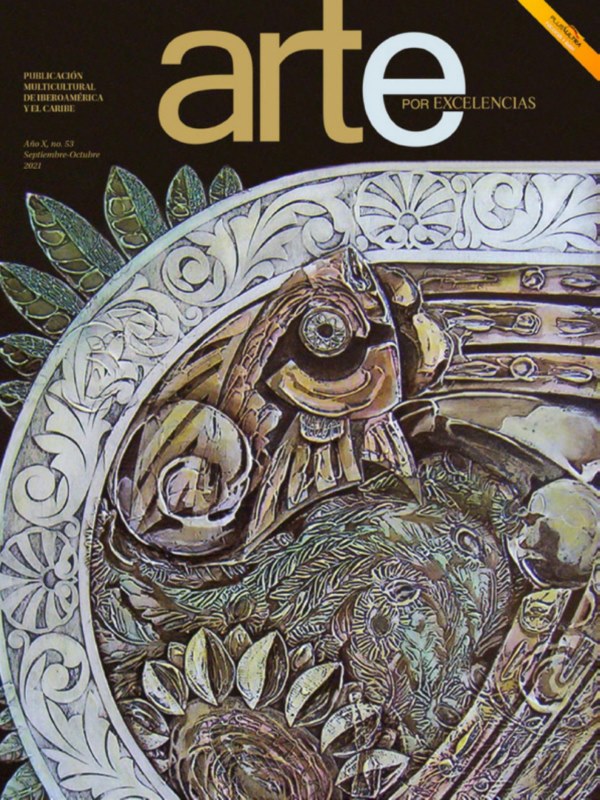Over the course of history the Three Graces, an archetype of beauty and harmony, have occupied an ambiguous and fascinating space in the visual arts which has made them a universal symbol. This group of female figures, celebrated in Antiquity for symbolizing the generosity of nature, has inspired artists of different eras and styles for centuries. Picasso and Koons address this allegory in the present exhibition, each offering a highly personal vision that departs from and at the same time pays homage to their classical sources.
In the case of Picasso, the return to Antiquity was an inexhaustible source of inspiration and trios of figures became a recurring motif, including The Three Graces of 1923. Employing his characteristic style, Picasso returned to the monochromatic and grave aura of classical statues, adding a note of introspection that transforms the classical ideal of beauty into something personal and disquieting. For his part, Jeff Koons revisited the theme with a contemporary and technological focus. Inspired by porcelain figures, he transformed the delicacy of this material into the unbreakable shine of his characteristic polished steel. Using a complex technique of direct application of paint onto metal, Koons succeeded in giving his Three Graces a festive appearance that contrasts with the melancholy of Picasso’s figures. From their different perspectives each artist thus proposes a reinterpretation of this mythical image which connects past and present in a continuous renewal of classical symbolism.
Classical mythology is also a source of inspiration both in Head with Helmet by Picasso of 1933 and in Koons’ work Gazing Ball (The Intervention of the Sabine Women by David) of 2015-16. Picasso’s bronze sculpture is another example of his profound connection with the classical Greek heritage. The work takes the broad, rounded forms of Picasso’s sculptural portraits of his muse Marie-Thérèse Walter as its starting point but goes one step further in terms of experimentation: the use of unusual moulds, such as a tennis ball to create the shape of the eyes, highlights the artist’s ability to transform everyday objects into elements with a powerful expressive charge.
Koons was also inspired by classicism, paying homage to the painting The Intervention of the Sabine Women (1799) by Jacques-Louis David, which represents the moment when the Sabine women, by now settled in Rome, witness the confrontation between their Roman captors and their families of origin, the Sabines. In his reinterpretation Koons introduced a hand-blown, blue glass sphere into the work which transforms the scene into a visual experience: the spheres of Koons’ Gazing Balls series, with their reflective surface and polished form, capture the viewer and their surroundings, making each observer an integral part of the work. A fifth piece, Gazing Ball (Standing Woman) (2014) is another example of Koons’ work that aims to connect ancient and contemporary worlds, inviting viewers to engage with the history of art. The artist borrows the female forms and poses that often represented idealised beauty and femininity.
Reflections Picasso is a project launched by the Museo Picasso Málaga, the Regional Ministry of Culture and Sport and the FABA with the aim of exhibiting Picasso’s work in emblematic locations in Andalusia. For 2024, the first selected venue for this exhibition is the Alhambra, specifically the Palace of Charles V and the Museo de Bellas Artes de Granada which is housed in that historic architectural complex.
Room 1 of the Museo de Bellas Artes de Granada, where the works by Picasso and Koons will be shown, constitutes in itself a journey through a crucial moment in the history of art as it displays works from the late Gothic period to the dawn of the Baroque. The artistic density of this space lies not only in the thirty-six works on display or the fourteen artists represented, but also in the richness of styles, periods and concepts that establish dialogues here. By introducing Picasso and Koons’ works into a space already so charged with references and traditions, visitors are invited to a engage in a reflection on the continuity of art and on reinterpretations of the great myths and classical themes.
Reflections. Picasso / Koons at the Alhambra is a project organised by the Museo Picasso Málaga in collaboration with the Almine and Bernard Ruiz-Picasso Foundation and the Jeff Koons Studio. The exhibition is curated by Miguel López-Remiro, Artistic Director of the Museo Picasso Málaga, with Ricardo Tenorio, Director of the Museo de Bellas Artes de Granada. It benefits from the support of the Regional Ministry of Culture and Sport, the Board of Trustees of the Alhambra and Generalife, and the Museo de Bellas Artes de Granada. All these institutions would like to thank Fundación Unicaja for its sponsorship of this project.
On the cover: A view of the exhibition © Museo Picasso Málaga
Source: Fundación Museo Picasso Málaga
Publicaciones relacionadas

Fundación Tres Pinos da a conocer su programación para 2025
Enero 03, 2025
Arte joven en exposición Circuitos de Artes Plásticas 2024
Diciembre 31, 2024
La obra de Débora Delmar en el Museo Jumex
Diciembre 30, 2024
















